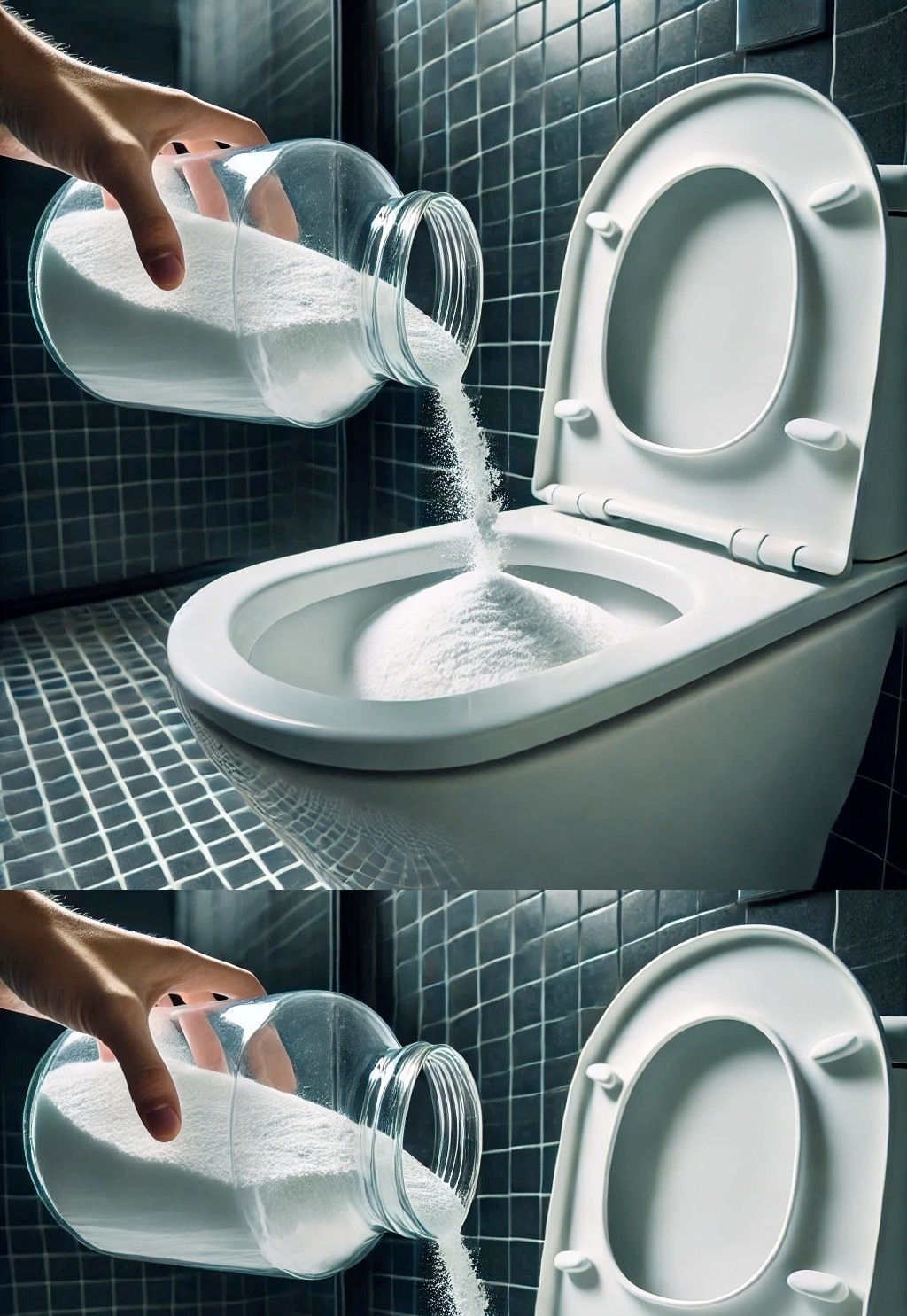ADVERTISEMENT
How to Use White Vinegar to Remove Limescale in Your Toilet
Now that you know why white vinegar is an effective solution, here’s a step-by-step guide on how to use it to remove limescale buildup from your toilet:
What You’ll Need:
- White vinegar (1-2 cups, depending on the size of your toilet)
- A toilet brush (preferably with stiff bristles)
- Rubber gloves (optional but recommended)
- A spray bottle (optional for targeted application)
- Baking soda (optional for extra cleaning power)
- A sponge or rag (optional for wiping down the toilet tank)
Step 1: Empty the Toilet Bowl
To begin, reduce the amount of water in the toilet bowl. This will help the vinegar concentrate on the areas with the most limescale buildup. You can either use a plunger to remove excess water or turn off the water supply to the toilet and flush to drain the bowl.
Step 2: Pour White Vinegar into the Toilet Bowl
Once you’ve reduced the water level, pour 1 to 2 cups of white vinegar directly into the toilet bowl. Aim to cover the areas with the heaviest limescale buildup, typically along the waterline and around the rim. The vinegar will start working immediately, breaking down the minerals that have accumulated.
For stubborn stains and hard-to-reach spots, you can use a spray bottle to apply the vinegar directly to the affected areas. This will ensure a more targeted application and help cover any areas that are harder to reach with the liquid alone.
Step 3: Let the Vinegar Sit
Now it’s time to let the vinegar work its magic. Allow the vinegar to sit in the toilet bowl for at least 30 minutes to 1 hour. This gives the vinegar ample time to dissolve the limescale deposits. If the buildup is particularly heavy, you can leave it for a bit longer or even overnight.
Step 4: Scrub with a Toilet Brush
After the vinegar has had time to work, it’s time to scrub the toilet. Using a toilet brush, scrub the sides of the bowl, paying close attention to the areas with visible stains or mineral buildup. The vinegar should have softened the limescale, making it easier to scrub away.
Be sure to scrub under the rim and around the waterline, where limescale tends to build up the most. If necessary, you can dip your brush into the vinegar solution to keep the areas damp while scrubbing.
Step 5: Optional: Add Baking Soda for Extra Power
If you’re dealing with particularly stubborn limescale or hard water stains, you can add some baking soda to the mixture. Sprinkle a few tablespoons of baking soda into the toilet bowl along with the vinegar and continue scrubbing. The combination of vinegar and baking soda will create a fizzing reaction that can help lift the mineral deposits and grime.
Step 6: Flush the Toilet
Once you’ve scrubbed the toilet thoroughly, flush the toilet to rinse away the vinegar and loosened limescale. This will also help to remove any remaining debris or residue in the bowl.
Step 7: Wipe Down the Toilet Tank (Optional)
If you have visible limescale buildup on the inside of your toilet tank, you can wipe it down using a rag or sponge soaked in vinegar. For light buildup, you may only need to wipe down the area once. For more stubborn stains, repeat the vinegar application and scrubbing process.
Additional Tips for Preventing Limescale Buildup in Your Toilet
While using white vinegar is an effective solution for removing limescale, it’s also a good idea to take preventive measures to avoid future buildup. Here are a few tips to help keep your toilet free from limescale:
- Use a Water Softener: If you live in an area with hard water, consider installing a water softener. A water softener can reduce the minerals in your water, making it less likely for limescale to form.
- Clean Regularly: Regular cleaning with vinegar or another natural cleaner will help prevent limescale buildup from becoming a major issue. Consider giving your toilet a quick scrub once a week to maintain its cleanliness.
- Install a Limescale Filter: Some toilets can be fitted with limescale filters that help prevent mineral buildup in the water system. This is an easy way to keep your toilet from becoming a hotspot for limescale.
- Turn Off the Water After Cleaning: If you’re going away for an extended period or don’t plan to use the toilet for a while, consider turning off the water supply to prevent constant exposure to hard water.
Conclusion: A Simple, Effective, and Natural Solution
Limescale buildup in your toilet is a common issue, but with the power of white vinegar, you can easily eliminate it without resorting to harsh chemicals. This simple, natural descaler will save you time, money, and energy, all while keeping your toilet sparkling clean and fresh.
By regularly using white vinegar to clean your toilet and taking preventive measures to minimize mineral buildup, you can ensure that your bathroom stays pristine and your toilet functions efficiently. So, the next time you notice stubborn limescale stains in your toilet, reach for that bottle of white vinegar and say goodbye to mineral buildup—naturally!
Happy cleaning!
ADVERTISEMENT
